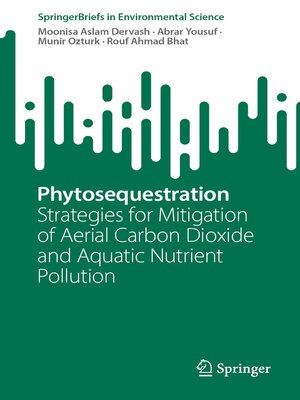Phytosequestration
ebook ∣ Strategies for Mitigation of Aerial Carbon Dioxide and Aquatic Nutrient Pollution · SpringerBriefs in Environmental Science
By Moonisa Aslam Dervash

Sign up to save your library
With an OverDrive account, you can save your favorite libraries for at-a-glance information about availability. Find out more about OverDrive accounts.
Find this title in Libby, the library reading app by OverDrive.



Search for a digital library with this title
Title found at these libraries:
| Library Name | Distance |
|---|---|
| Loading... |
Most imperative environmental concerns are Cultural eutrophication pertaining to industrialization and urbanization which lead to proliferation of weeds in aquatic environs disturbing these ecosystems. Alarming increase in CO2, CH4, CFC's, N2O and water vapour in the atmosphere cause enhanced greenhouse effect, among all these CO2 is accountable for 55-60 % of total enhanced effect. Phyto- and Nutrient sequestration via plants helps storage of atmospheric CO2 in the vegetation to get rid of contaminants. Carbon and nutrient sequestration can be braided together for sustainable development goals. The chapters adopt the hierarchy as follows: significance of quality environs, quantification and bio-monitoring of culprit contaminants, the issues relevant to global warming and accelerated eutrophication and their ecological impacts followed by various sequestration technologies.







